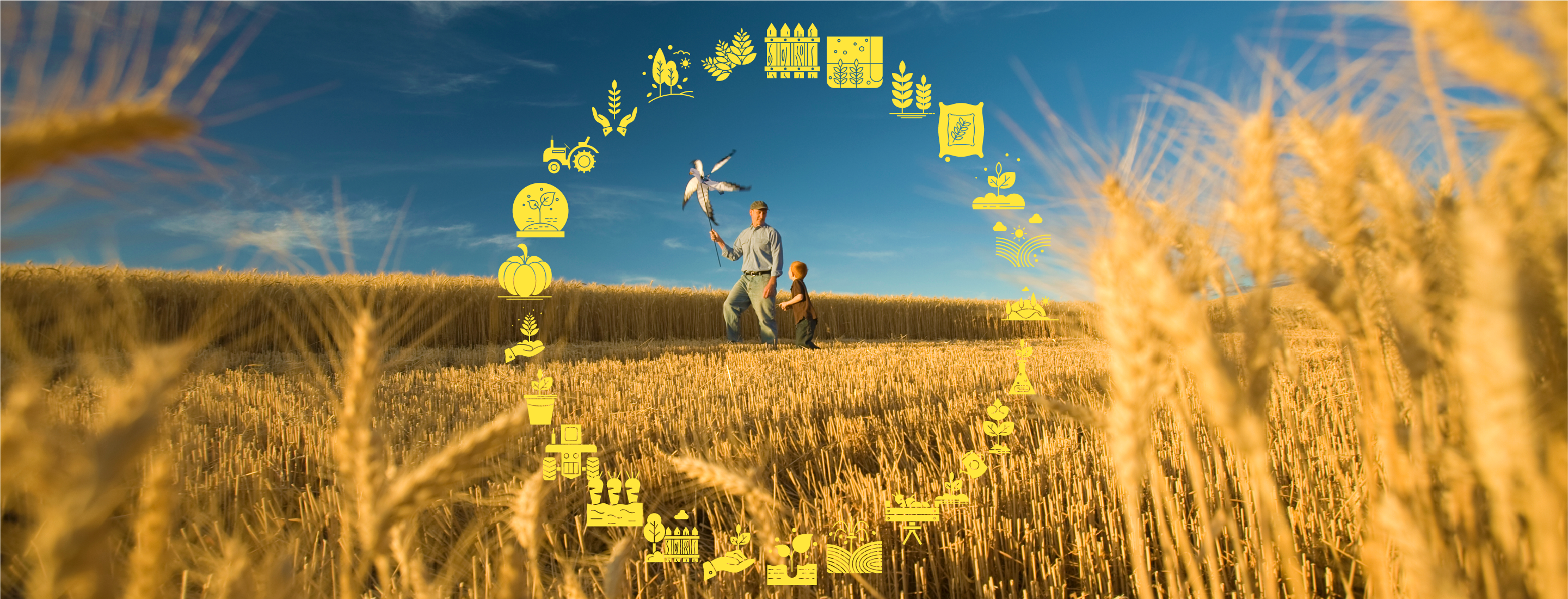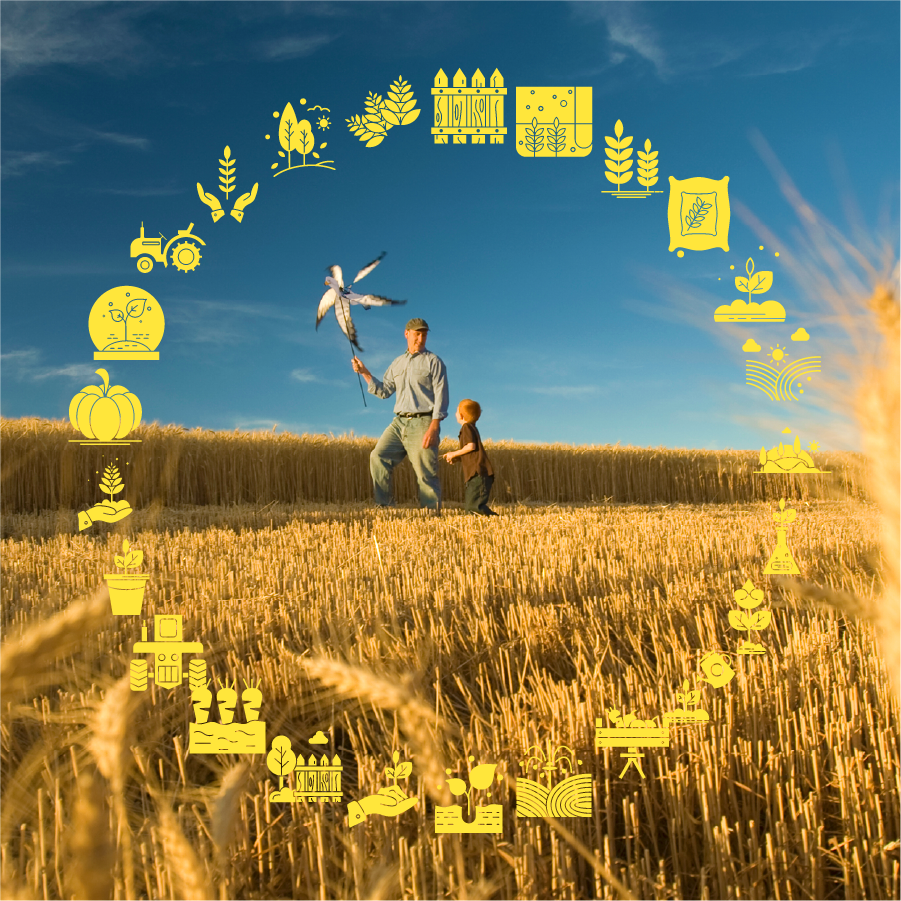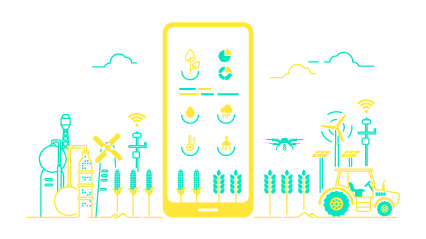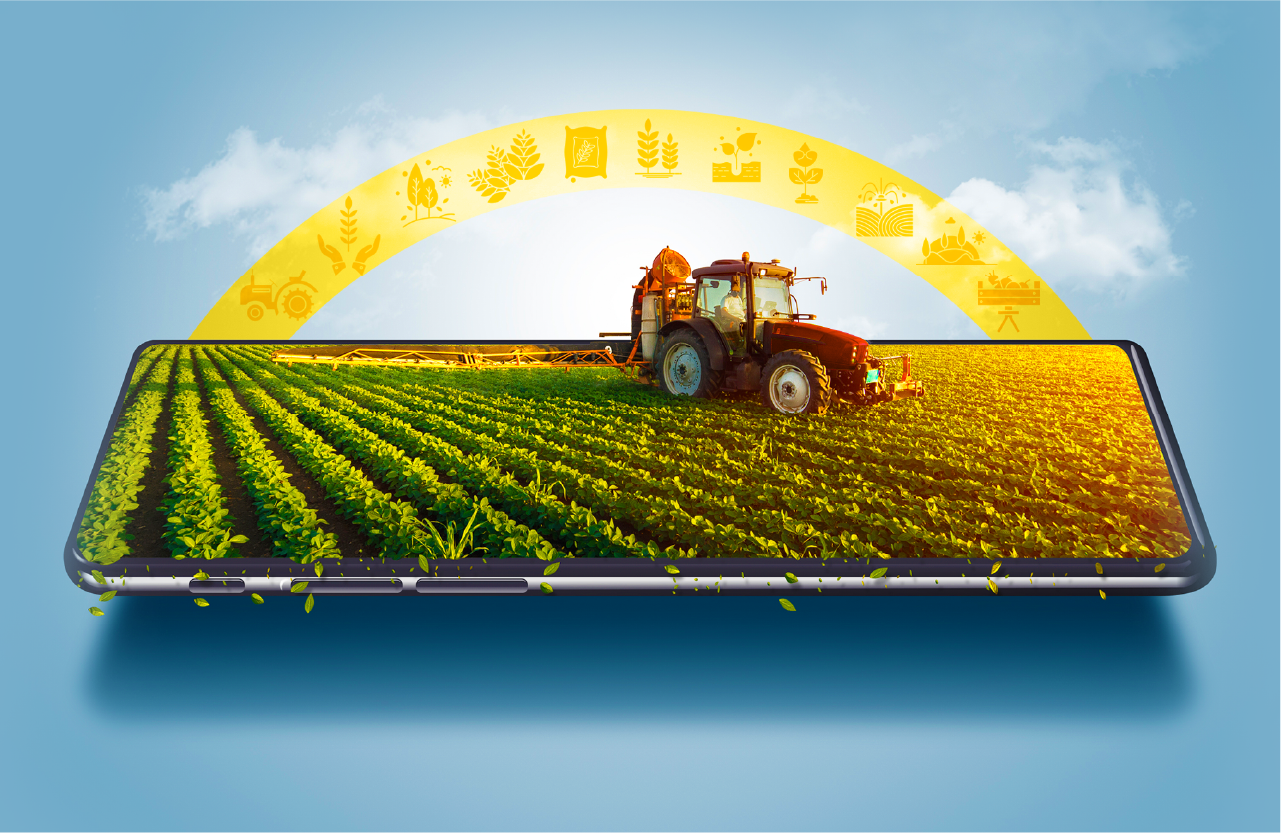What issue can we solve for you?
Type in your prompt above or try one of these suggestions
Suggested Prompt



Energy & Commodities
Drive Agriculture Digital Adoption by Developing Farmer-Centric Solutions
Drive Agriculture Digital Adoption by Developing Farmer-Centric Solutions
Sidhartha Bhandari • Kyle Daeley • Masud Haq
Executive summary:
- Farmers hesitate to adopt unproven technologies that are closely aligned to the four pillars of farming—land, labor, water and seed—due to the exponential increase in risk they take on and the technologies’ lack of established value.
- Agribusinesses can instead develop digital solutions beyond the four pillars to create value for growers and reduce their risk.
- Technologies should enable frictionless, holistic experiences that give time back to farmers.
Digital transformation in agriculture promises to make farming more efficient and profitable, especially as farmers are more technologically connected than they have ever been before. Yet digital solutions are impactful only if farmers find value in and adopt them.
How can agribusinesses—organizations that provide products and services in support of the agricultural value chain—build valuable digital solutions that farmers will want to adopt? Organizations must create value for farmers by designing solutions with farmers’ needs in mind. These solutions should minimize risk and maximize outcomes for farmers by enabling frictionless experiences and helping them get back more time in their day.
Unproven solutions with unassured value bring risk for farmers and agribusinesses
Every new digital solution carries with it a risk-reward ratio for both adopters and providers. Agribusinesses—especially input providers (e.g., seed and crop protection, nutrients, etc.)—take a risk by developing a solution that may not connect with growers, and farmers take a risk by adopting new solutions that affect business outcomes. To maximize benefits, solutions should create value for farmers by alleviating growers’ risk, not adding to it.
Inside-the-farmgate solutions add risk for farmers
Farmers encounter risks every day, ranging from legal and environmental risks to financial ones. Arguably the biggest one they face is production risk, or factors that impact yields. Often, these risks—like weather patterns—are outside farmers’ control. Yet, some factors that impact production—such as inputs or new solutions—are within farmers’ control, and growers must calculate a risk-reward ratio when considering them.
Farmers largely structure their enterprise around four pillars of farming: land, seed, labor and water/synthetic inputs. These “inside-the-farmgate” issues can significantly impact business. If, for example, flooding oversaturates the land or seed supply chains experience disruption, it affects crop yields and a farmer’s bottom line. Key pillar innovation includes novel, advanced technology—such as seed genetics and alternatives to traditional pesticides—or simple tools, like water-efficient technology that zonally sprays fields, similar to how homeowners hydrate their lawns.
Distance matters for digital adoption
A digital solution’s adoption rate often correlates to its proximity to the farmgate: The closer a solution moves to the farmgate, the greater the risk will be to the farmer, and the lower the adoption rate will be. That is certainly true of variable rate technology, which has a global adoption rate of less than 20 percent. Though the use rate differs from crop to crop, an average of less than nine percent of American row-crop farms use variable-rate pesticides.
New digital solutions geared toward inside-the-farmgate issues ask farmers to assume too much risk with no guarantee that the product will be beneficial. In trying out novel solutions, farmers ultimately risk yield loss by replacing tried-and-true products with unproven ones. Changes like adopting a new pesticide—especially products that are not as established—increase farmers’ risk, since the new product may damage their land, reduce their yield or fail to control the pest population in the field.
To mitigate their risk, farmers may avoid new innovations and stick with the solutions they already know.
These potential risks are all the more challenging at a time when farm production costs have soared. Expenses for American farmers increased by nearly 24 percent between 2018 and 2022. With thin margins, farmers simply do not have the luxury of testing unproven solutions.
To mitigate their risk, farmers may avoid new innovations and stick with the solutions they already know. Only 13 percent of American corn farms are early adopters of novel precision agriculture technology, which suggests that the vast majority of corn farmers opt to wait to try new solutions, preferring tried and tested methods.
Agribusinesses risk building solutions that farmers will not want to adopt
Developing inside-the-farmgate solutions brings risk for organizations too. Even though farmers hesitate to try yet-to-be-established solutions, venture capitalists tend to finance innovation that impacts farms inside the gate. Consequently, startups may find investors but struggle to convince farmers to take on additional risk by adopting unproven products that may impact their yield. Moreover, farmers may prefer to work with mature organizations that are known to them rather than unfamiliar ones.
The need for reliable innovation that is useful for farmers presents an opportunity for agribusinesses.
At the same time, established, large organizations venturing into digitally connected agricultural experiences face their own set of challenges. Often, these companies have longstanding relationships with farmers, and digital innovation means reimagining farmers’ experiences while preserving these relationships. As a result, these organizations face their own risk when taking chances on new technologies. To mitigate this risk and preserve legacy relationships with farmers, agribusinesses should develop products that meet farmers’ needs.
The need for reliable innovation that is useful for farmers presents an opportunity for agribusinesses. They can increase their adoption rate and create value for farmers by focusing on innovation outside the farmgate.
Digital solutions should create value by enabling experiences outside the farmgate
Agribusinesses can think of themselves as enablers whose goal is to minimize risk and reduce pain points for farmers. In providing digital, outside-the-farmgate solutions that make farmers’ lives easier and deliver a high ROI, agribusinesses can create value for farmers by giving them time back in their day.
Indeed, farmers highly value their time because they must complete multiple and competing tasks on limited timelines, even as they are often overworked. According to the U.S. Bureau of Labor Statistics, farmers routinely work more than 40 hours per week.
Solutions outside the farmgate—which are focused primarily on the business side of farms—provide value to farmers by making operations more efficient and less time-consuming.
Solutions outside the farmgate—which are focused primarily on the business side of farms—provide value to farmers by making operations more efficient and less time-consuming. Recordkeeping software, for example, can minimize paperwork and help farmers realize untapped value by potentially lowering costs like insurance premiums. By creating solutions that automate or streamline processes, agribusiness can minimize friction points and reduce labor hours.
Designing solutions that enable non-digital experiences also creates value for agribusinesses. New technologies that optimize menial tasks—such as payroll, insurance, etc.—and give farmers time back in their day are often the very ones that corporate majors choose to acquire.

Some examples of digital solutions that give time back to farmers include:
- Digitized payment systems that reduce the waiting time for payments, enabling farmers to get paid in two business days instead of 30.
- Data transparency tools that streamline and offer insights into the information farmers collect.
- Apps that generate agronomic reports that allow farmers to customize categories and prioritize areas of concern with color-coded labels.
All of these solutions enable farmers to conduct their business more efficiently, which in turn generates value by allowing them to shift their attention to other issues on the farm.
How to build solutions with farmers in mind
When developing digital solutions, agribusinesses should consider:
1. Farmer personas:
One size does not fit all, so agribusinesses should refine farmer personas in order to effectively identify their clients. Data collection enables agribusinesses to understand how farmer A’s needs may be different than those of farmer B and dependent on a variety of factors, including acreage, crop type, types of machinery, etc.

2. Internal organizational resistance:
Large organizations with well-articulated processes often face challenges when evolving. Resistance to change or new products might come from within the organization, especially when digital ways of operating are not at the core of their business model.
3. Farmer risk and business disruption:
Agribusinesses should understand the risk that farmers assume when taking on unestablished products so that they can develop tools that reduce risk while minimizing disruption to business. Farmers also feel that their level of risk increases when they do business with unknown companies.
4. Economic value/relevance:
New digital tools should create value for farmers and help them maximize resources.
5. Digital business models and channel synchronization:
Human-to-human interaction is important to farmers. Agribusinesses should meet farmers on their terms while also expanding channels through which they can do business.
To see this approach in action, consider the following real-life case:
One large company developed an online platform on which ranchers auction their livestock. Though the company gained insight into the quality and value of the meat, these insights remained unavailable to ranchers, who looked for ways to optimize their on-farm practices.
The company came up with a solution. It reduced friction for ranchers by giving them access to these insights. Ranchers thus efficiently learned how they can raise more valuable livestock through factors such as nutrition, thereby reducing the need to experiment with different practices or gain insights on their own. The solution was a win-win for the company and the rancher: The company can sell targeted products and services to the rancher, and the rancher quickly gains detailed, data-driven knowledge about their livestock’s value.
The best solutions are useful solutions. They create value, reduce risk and ease pain points. By designing digital solutions with farmers’ needs in mind, agribusinesses can drive the adoption of new technology in agriculture while helping farms become more efficient and digitally connected.
Related Reading
-
![]()
Farmer Engagement Drives Digital Adoption
Agribusinesses can enhance digital agriculture experiences by using farmer-centric strategies.
-
![]()
Nine steps to success for acquiring agritech startups
Before you consider acquiring an agribusiness startup, learn how to overcome the top operational and tech challenges.
-
![]()
Getting Ahead With New E-trends
E-commerce moves fast, but you can move with it. This article highlights some of the latest trends to help you plan and prepare.










